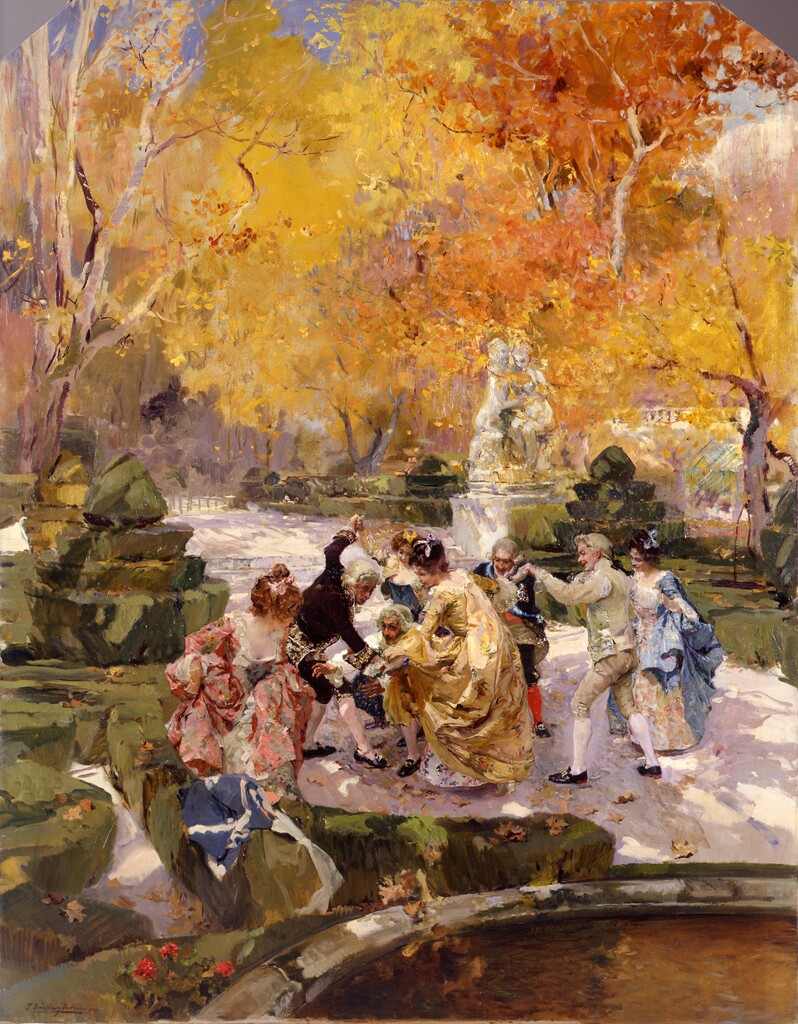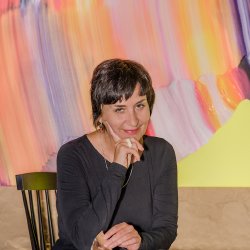Why Visit Now: Valencia
Explore Valencia: A sun-drenched mediterranean marvel with 300 days of sunshine. Discover Top 10 insights from its cultural venues, innovative Valencian cuisine, stunning architecture and vibrant counterculture.
With 300 days of sunshine a year, one could argue that it’s hardly ever not a good time to visit Valencia.
But for decades, this Mediterranean city has played second fiddle to visitors to Spain. Slowly but surely it caught up, boosted by playing hosts to major events such as the America’s Cup and World Design Capital, lending an opportunity to revamp the port and refresh the old town with cool cultural venues, while Valencian cuisine now brims in flavorful innovation.
In terms of culture, gastronomy and all-round great facilities, you could say Valencia is in its prime.
1. European Green Capital
Valencia takes its ‘year of’ designations to heart. After a tremendously successful ‘ World Capital of Design in 2022, 2024 rings in Valencia as the European Green Capital. Not that a sensibility towards biodiversity was ever that far away. The city is surrounded by Spain's largest expanse of fruit and vegetable farms and the rice paddies of the L’Albufera. (Coincidentally, this is where paella was invented, as a worker’s lunch) In 1957, after yet another catastrophic flood, the Tύria River that winds the city was drained, and its bed converted into a ‘green lung’.
Every day, its 12 km of verdant parkland and playgrounds are thronged with walkers and cyclists, not to mention armies of squirrels and abundant bird life.
To celebrate its ‘green year’, four new cycling routes have been established, three in the central city and one winding to the Natural Park of L’Albufera. We recommend the latter for an understanding of the significance the countryside has to Valencia’s culture and economy, not to mention an opportunity to taste the most authentic paella in Spain.
A Commitment to Sustainability, Creativity and Preservation.

Green Capital
Valencia's cycling routes celebrate European Green Capital 2024. [Photo: Suzanne Wales]

Cuadernos Rubio
In Valencia's Ensanche, the Cuadernos Rubio store becomes a design adventure, with Masquespacio's retro-futuristic vision turning schoolbooks into an immersive experience. [Photo: Suzanne Wales]

CAHH
Discover the Centro de Arte Hortensia Herrero where a 17th-century palace meets contemporary masterpieces. [Photo: Suzanne Wales]
2. The Design Scene Is Popping
While Valencia’s stint as 2022 World Design Capital shone a light on its creative energy, it was only a matter of time before it bubbled to the surface. The city is home to dozens of design and architecture studios that lead the way in new Spanish Design. From the quirky and colourful creations of Jaime Hayon and Masquespacio, the warmly irreverent objects and decor of Inma Bermúdez studio, or the elegantly minimalist interiors from Ramόn Esteve.
Get a feel for Valencia’s design and craft scene by strolling around the ancient El Carme district, where you’ll find many designer-run boutiques and galleries. For espadrilles, notebooks and charming knick-knacks, pop into Simple - a cornucopia of handmade items from all parts of Spain. For a traditional Valencian fan with a fashionably modern look, visit Burriell. But for a real taste of how local designers are elevating the everyday, head to the Cuadernos Rubio store in the Ensanche where Masqueesapcio have created an experiential, retro-futuristic decor for publishers of kids’ school books.
3. A New Art Palace
When you walk past a Mercadona (and as Spain’s largest supermarket group you most definitely will) spare a thought for Hortensia Herrero, the wife of the company’s founder, for she has generously funded the most exciting new art museum in Spain. The recently opened Centro de Arte Hortensia Herrero (CAHH) has been many years in the making, mainly because the conversion of a 17th-century palace was delayed by regular discoveries of ancient remains from the Roman and Arabic epochs.
While all this was going on, Señora Herrero was prolifically adding to her private collection. Her taste is assured and impeccable, with standout pieces from Tony Cragg, Anish Kapoor and Anselm Kiefer. There are site-specific works too, notably by the Catalan artista-de-jour Jaume Plensa. But even if contemporary art is not your thing, the CAHH is worth the modest entry fee for the magnificent building alone.
4. Revamped City of Arts & Sciences
When the City of Arts and Sciences opened in 1998 it was hoped it would do for Valencia what the Guggenheim did for Bilbao: that is, to put a ‘secondary’ city on the international culture map. And for many years it did. Valencian architect Santiago Calatrava created an eye-popping cluster of structures that provided a striking modern symbol of the city, although the exhibitions inside were never quite as groundbreaking.
Today, one of the main venues of the site (named ‘El Agora’) has become part of the national Caixaforum group of museums. Another avant-garde architect, Enric Ruiz Gelli, has adapted the giant space with site-specific installations that invite visitors to reflect on the themes of biodiversity and sustainability.
Also on the site, L’Oceanogràfic is the largest aquarium in Europe and has developed into an important centre of research and refuge for endangered marine species.
5. New Valencian Cuisine
Of course, you should eat paella in Valencia! Spain’s most famous dish was born in the region after all. But leave some room to discover a new wave of local chefs stirring up local cuisine.
The leader of this creative culinary pack is chef Ricard Camarena who helms several restaurants in the city.
For a Michelin-starred dining experience, book a table at his eponymous restaurant at the Bomba Gens Contemporary Arts Centre. For one that is fun and affordable, his Canalla Bistro riffs on South American and Asian flavours with local ingredients and wildly imaginative plate presentations.
Stay Inspired. Explore the World.
Subscribe to the Wayer Journal and discover a world of inspiring stories and Fernwayer's newest, meticulously crafted private tours.
Cafes and tapas are also getting a modern makeover, particularly in the trendy Ruzafa district. Join locals at Blackbird Cafe next to the market for coffee and brunch burritos and bowls.
Imaginative Transformation of Spaces and Experiences.

Casa Clarita
Casa Clarita: Jaime Hayon infuses a classic townhouse with bold colors and imaginative design. [Photo: Suzanne Wales]

Canalla Bistro
Canalla Bistro's fusion of South American and Asian cuisines, creatively plated with local Valencia ingredients. [Photo: Suzanne Wales]

Mercado Central
Valencia's Mercado Central blends art nouveau elegance with culinary delights. [Photo: Suzanne Wales]
6. A Clutch Of Bright New Boutique Hotels
New boutique and designer hotels brighten up the city’s accommodation scene. In the old town’s El Carme barrio and a stone’s throw from the cathedral, local designer Jaime Hayon converted a classic townhouse into Casa Clarita - a joyous hostelry busting colour, imagination and above all comfort. Over in Ruzafa, Yours Boutique Hotel offers serene Scandi-style minimalism and a sunny patio with a plunge pool.
For something with more local character, La Novieta, also in Ruzafa, is a traditional townhouse where rooms have been given a retro-chic polish while leaving beautiful period details intact. For flashy urban luxe, Estimar Valencia Hotel has the most chic rooftop scene in the city.
7. Markets Making Their Mark
Valencia’s stunning Mercado Central rightly deserves a few hours of your time to marvel at its gorgeous art nouveau architecture and pursue its luscious food and pots and pans stalls. But down near the marina, the newly refurbished Mercado del Grao is the city’s largest but has a much more local vibe.
Tapas and farm-to-table ‘markets’ are making their mark too. The Mercado de la Imprenta offers 21 food and drink stalls, from vermouth to sushi, inside restored print works. Mercader in El Cabanyal is a similar concept, this time in an old industrial building that has been given an impressive glow-up that makes the most of its outdoor patios.
8. Sorolla Comes Home

Joaquín Sorolla was a genius impressionist painter you may not (but really should) be familiar with. He was born in Valencia in 1863, though most of his professional career was spent in Paris, Madrid and even the US. Throughout his career, he became renowned as the ‘artist who captured the Mediterranean light’. His captivating paintings act as windows into the Mediterranean culture and society of the Belle Epoque: From the good, such as his iconic ‘Children at the Beach’ from 1899 to the thought-provoking - a similar work of bathing children reveals young leprosy sufferers being led to the ‘healing’ waters of the Mediterranean.
The new Sorolla Hall at the magnificent Valencia Museum of Fine Arts exhibits over 40 works of the Mediterranean maestro, a fitting tribute to one of the city’s most artistic sons. The museum itself is Spain’s second largest. Housed in a beautiful period building that was once a Catholic seminary, you can see other works from the Valencian School along with those of Spanish masters such as Goya.
9. The Palau de la Música Reopens!
The much-loved Palau de Música has reopened after a four-year restoration period with a mission to amplify its program for all ears and budgets.

Classical, flamenco, jazz and even electronic music will be performed in this landmark modern building overlooking the Túria Gardens. Performances range from internationally renowned musicians to municipal bands, family concerts and music festivals.
The Valencia Municipal Band performs at Palau regularly - a fun experience as extended families and friends fill the venue’s beautiful concert hall with tangible enthusiasm.
[Photo: Suzanne Wales]

10. El Cabanyal Strikes Back
Despite being close to the city’s sandy shores, the maritime barrio of El Cabanyal remained under the radar for many decades. Some adventurous tourists came to admire its distinctive homes with their colourful tiled facades, many of which were threatened with demolition until public outcry saved them.
Today, these properties are being snapped up and gentrified, and a handful of dining and entertainment options are breathing new life into the barrio too. For excellent seafood and fish dishes, book a table at La Sastrería, a buzzy bistro where local studio Masqueespacio have recreated the look and feel of the district with geometric tiled walls and tables. For music, theatre and more, check out the programme of La Fabrica del Hielo, an independent urban arts and performance space set in an old ice factory.
From counterculture to stunning architecture and memorable cuisine, there's never been a better time to experience the magic of Valencia firsthand! ||
